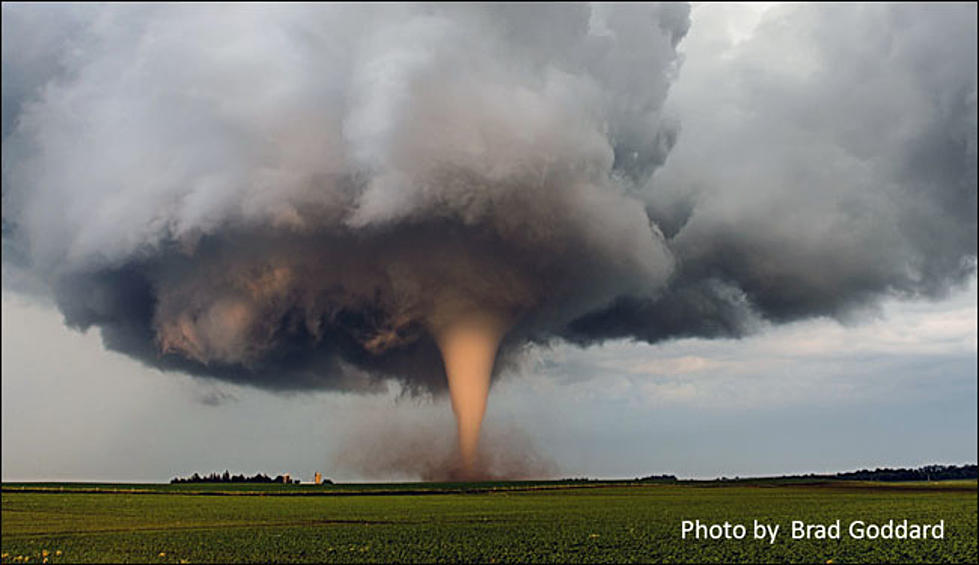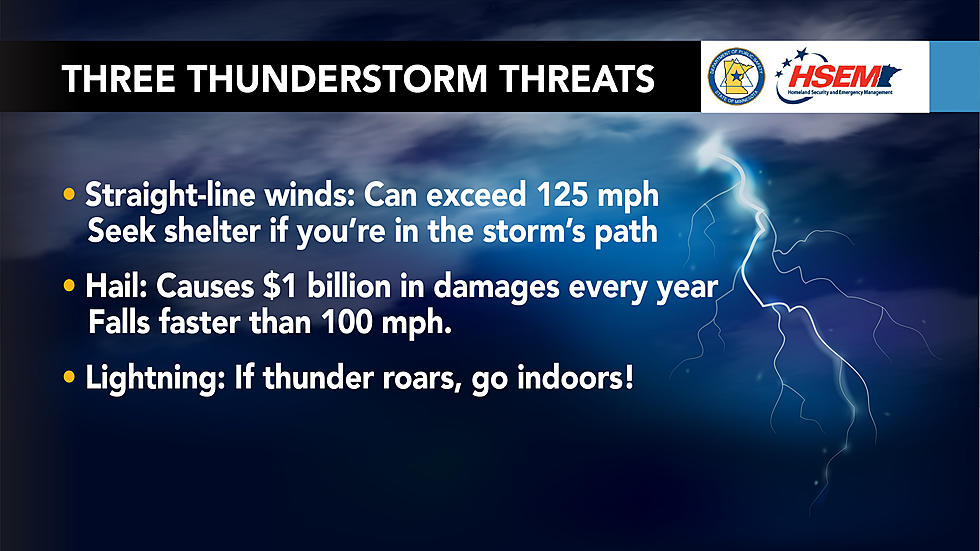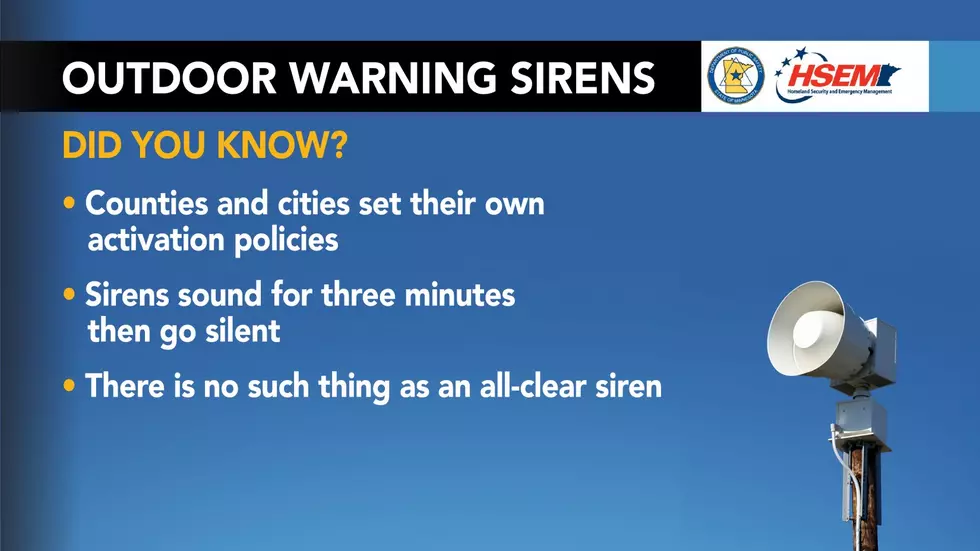
Minnesota Severe Weather Awareness Extreme Heat
Extreme heat and Minnesota are not always considered to be synonymous with each other. Right after my high schoolI graduation I went to Florida for a trip with a friend.
We met these ladies in the Sunshine State that literally thought we lived in igloos.
For those of us who have lived in Minnesota for multiple seasons we know it can get very hot in the Land of 10,000 Lakes.
According to the Minnesota Department of Health (MDH) between 2000 and 2016, 54 people have lost their lives directly to extreme heat in the Gopher state.
On July 19, 2011 an all-time heat index record was set in Minnesota. The air temperature was 93 degrees Fahrenheit and the heat index reached 130 degrees Fahrenheit in Moorhead.
The National Weather Service places high priority on alerting the public to heat wave hazards. They issue advisories, watches and warnings for extreme heat.
Excessive Heat Outlooks: Are issued when the potential exists for an excessive heat event in the next 3-7 days. An outlook provides information to those who need considerable lead time to prepare for the event, such as public utilitiy staff, emergency managers and public health officials.
Excessive Heat Watches: Are issued when conditions are favorable for an excessive heat event in the next 24 to 72 hours. A Watch is used when the risk of a heat wave has increased but it's occurrence and timing is still uncertain. A Watch provides enough lead time so that those who need to prepare can do so, such as city officials who have excessive heat event mitigation plans.
Excessive Heat Warnings: Are issued when an excessive heat event is expected in the next 36 hours. These are issued when an excessive heat event is occurring, is imminent, or has a very high probability of occurring. The Warning is issued for conditions posing a threat to life.
An Advisory is for less serious conditions that cause significant discomfort or inconvenience and if caution is not taken, could lead to a threat to life.
Heat Index is sometimes referred to as the apparent temperature given in degrees fahrenheit. A measure of how hot it really feels when relative humidity is factored in with the actual air temperature.
The National Weather Service initiates alert procedures when the Heat Index is expected to to exceed 105-110 degrees Fahrenheit for at least two consecutive days.
It seems every year we hear about people leaving children or pets in a vehicle during generally hot weather. It doesn't even have to be extreme to be dangerous.
Each year dozens of children and untold numbers of pets left in parked vehicles die from hyerthermia which is an acute condition that occurs when the body absorbs more heat than it can handle. Hyperthermia can occur even on a mild day.
Studies have shown the temperature inside a parked vehicle can rapidly rise to a dangerous level for children, pets and even adults. Leaving the windows slightly open does not significantly decrease the heating rate. The effects can be more severe on children because their bodies warm at a faster rate than adults.
Here are some tips from the National Weather Service for preventing heat related illness.
- Drink more fluids (non-alcoholic) regardless of your activity level. Don't wait until you are thirsty to drink. Warning: if your doctor generally limits the amount of fluid you drink or has you on water pills, ask how much you should drink while the weather is hot.
- Don't drink liquids that contain alcohol or large amounts of sugar-these cause you to lose more body fluid. Also avoid very cold drinks because they can cause stomach cramps.
- Stay indoors and if possible stay in an air-conditioned place. If your home does not have air conditioning, go to a shopping mall or public library. Even a few hours spent in air conditioning can help your body stay cooler when you go back into the heat.
- Electric fans may provide comfort, but when the temperature is in the high 90's fans will not prevent heat-related illness. Taking a cool shower or bath, or moving to an air-conditioned place is a much better way to cool off.
- Wear lightweight, light-colored, loose-fitting clothing.
- NEVER leave anyone in a closed, parked vehicle.
- Although anyone can suffer from heat-related illness some people are at greater risk than others. Check regularly on Infants and young children, People aged 65 and older, People who have mental illness and those who are physically ill, especially with heart disease or high blood pressure.
- Visit at-risk adults at least twice a day and watch them for signs of heat exhaustion or heat stroke. Infants and young children of course need much more frequent attention.
- If you must be out in the heat limit your outdoor activity to morning and evening hours.
- Cut down on excercise. If you must excercise drink two-to-four glasses of cool, nonalcoholic fluids each hour. A sports beverage can replace the salt and minerals you lose in sweat. Warning: If you are on a low-salt diet talk with your doctor before drinking a sports beverage.
- Try to rest often in shady areas.
- Protect yourself from the sun by wearing a wide-brimmed hat and sunglasses and by putting on sunscreen of SPF 15 or higher.
- Here is information from the National Center for Disease Control and Prevention
If you have not done so please sign up for the emergency notification system at your location. Below are listed the notification systems used in nine area counties. Just click on the notification system and the link will take you to the sign-up page for each system.
Everbridge, Rice, Steele, Dakota, LeSueur Counties.
CodeRed, Goodhue, Waseca, Scott, Dodge, Wabasha Counties.
Some great advice here.
TIPS: Here's how you can prepare for power outages






